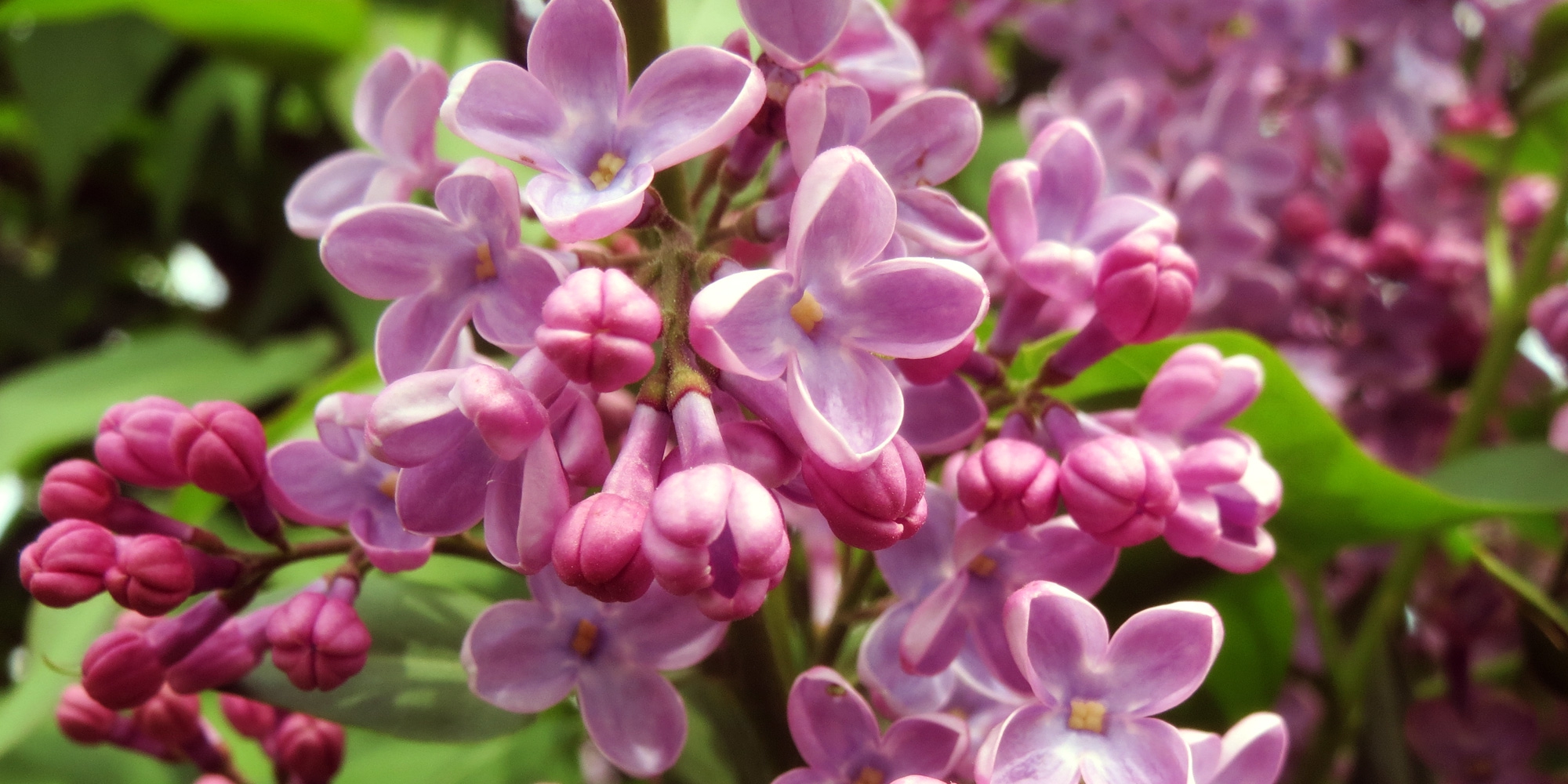A sure sign of spring is the flowering of the lilac. There are quite a few different types, though, and you can have fun with lots of different lilacs.
There are two common mistakes when it comes to growing and caring for your lilac. The first is location. Lilacs want full sun in order to flower. If they don't get enough sun, they will simple grow leaves and refuse to flower. This is the single most common error I see in the garden and get the most calls about. Make sure that if you want a flowering lilac, place it in the sun or else you will be disappointed.
The second most common issue comes from pruning. Lilacs need the be pruned only after they flower. Since lilacs form their flower buds in the summer and fall months, pruning too late removes the flowers for the next year as does pruning in the spring. When pruning for height, it's not a great idea to lop the top off a lilac. Though this does make them shorter, the end result is a very woody plant with leaves only appearing at the top of the plant - not very desirable in the garden. Instead, remove up to 1/3rd of the largest branches right at ground level. This hard pruning causes the lilac to send up new growth right from the base leading to a nice green and healthy plant from tip to toe.
If we ignore the different colours of lilacs for a moment and spread lilacs over into "categories" or species, we can get a better understanding of the different kinds of lilacs. Within each species there may be additional colours available as well, but the list of colours is a little beyond the scope of these discussions.
Let's start with imagining the common lilac which grows wild. It's part of the Syringa vulgaris species. Now the plain old common lilac isn't all that easy to get since it isn't the most well-behaved plant in the garden. They sucker up from the roots and spread forming large colonies which can be less than desirable. The French Hybrids come to the rescue at this point. French Hybrids are essentially common lilacs that have been grown for different colours and less of a suckering habit. You end up with the best of both words - well behaved in the garden and stunning colour display.
Similar to the common lilac in appearance, but earlier to flower is the Canadian Lilac series or Syringa x hyacinthafolia. In nearly all respects, these are just like the French Hybrids but flower one or two weeks earlier. This makes a really nice early show in the garden. Unfortunately, it's not as easy to find the Canadian Lilacs nor are there as many colours available, but they are definitely one to look for.
The next series that sees to be the most forgotten is the Syringa x perstonae or Preston Lilac. Preston lilacs were developed here in Ottawa under the long-gone Ornamental Plant Program at the Experimental Farm. These lilacs have a different leaf that the common lilac looking far coarser and less heart-shaped. They also flower about two weeks later making them ideal at filling in that later-spring flowering gap after the fruit trees have done their thing. They're tough and vigorous and great overall lilacs that really get pushed along the wayside far too often.
The Syringa mereyi or the Korean Lilac is the dwarf lilac. It's more of a ball shape than an upright plant like other lilacs. Colour selection is limited to one real colour of lilac-pink since it's close cousin which is hot pink seems to be less dwarf.
Syringa patula is another really nice lilac that isn't use too often. Miss Kim is really the only one you see and it looks like a small version of a common lilac in nearly all respects. It maintains a nicer lilac shape, but much more compact. The leaves are somewhat darker but still smooth.
For a large lilac, the Syringa reticulata is the Japanese Tree Lilac. Ivory Silk is pretty well the only one available with nice white booms which appear in June, much later than the shrub-form lilacs.
There are other lilacs around other than the ones we mentioned like the Late Lilac, Hungarian Lilac, Chinese Lilac, and quite a few others. However, these less common lilacs are very difficult to find and are often not nearly as suitable for the garden.
Now that we know a little about lilacs, we can make better decisions as to while lilacs we want in our garden. They're great accent plants, perfect for a large informal hedge, or simply a nice addition to your yard, especially planted under a bedroom window where the sweet fragrance can drift through the house on a nice springtime morning.

